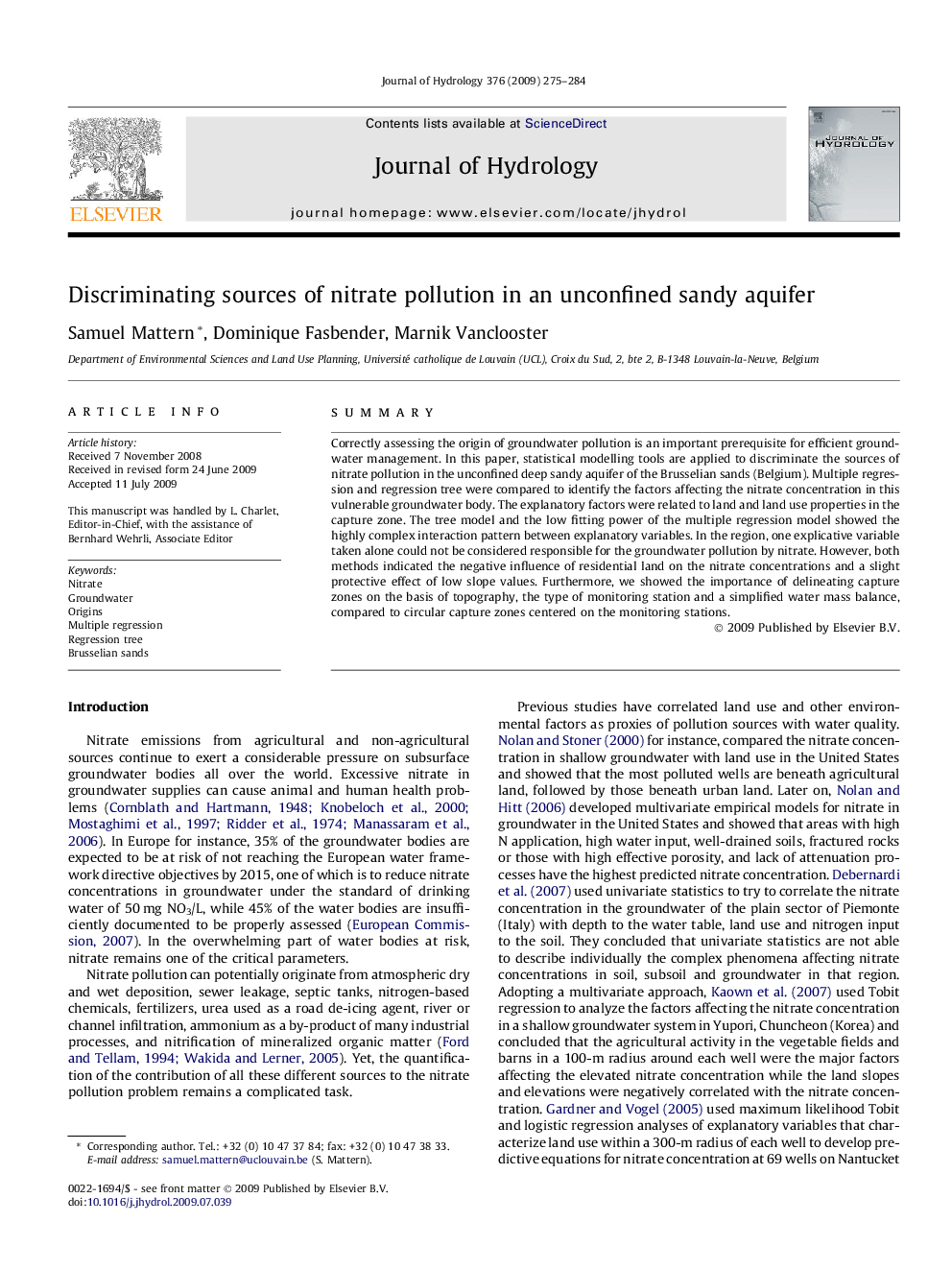| Article ID | Journal | Published Year | Pages | File Type |
|---|---|---|---|---|
| 4578825 | Journal of Hydrology | 2009 | 10 Pages |
SummaryCorrectly assessing the origin of groundwater pollution is an important prerequisite for efficient groundwater management. In this paper, statistical modelling tools are applied to discriminate the sources of nitrate pollution in the unconfined deep sandy aquifer of the Brusselian sands (Belgium). Multiple regression and regression tree were compared to identify the factors affecting the nitrate concentration in this vulnerable groundwater body. The explanatory factors were related to land and land use properties in the capture zone. The tree model and the low fitting power of the multiple regression model showed the highly complex interaction pattern between explanatory variables. In the region, one explicative variable taken alone could not be considered responsible for the groundwater pollution by nitrate. However, both methods indicated the negative influence of residential land on the nitrate concentrations and a slight protective effect of low slope values. Furthermore, we showed the importance of delineating capture zones on the basis of topography, the type of monitoring station and a simplified water mass balance, compared to circular capture zones centered on the monitoring stations.
